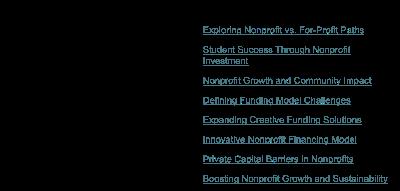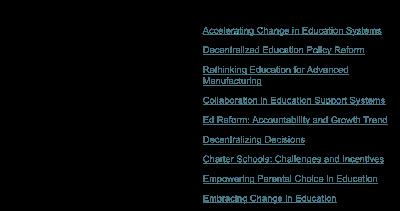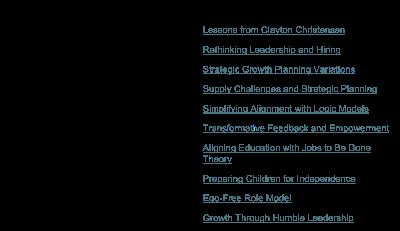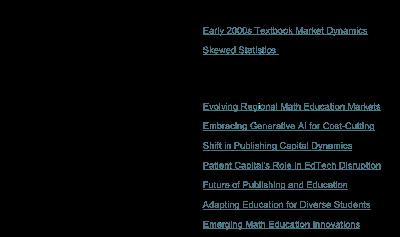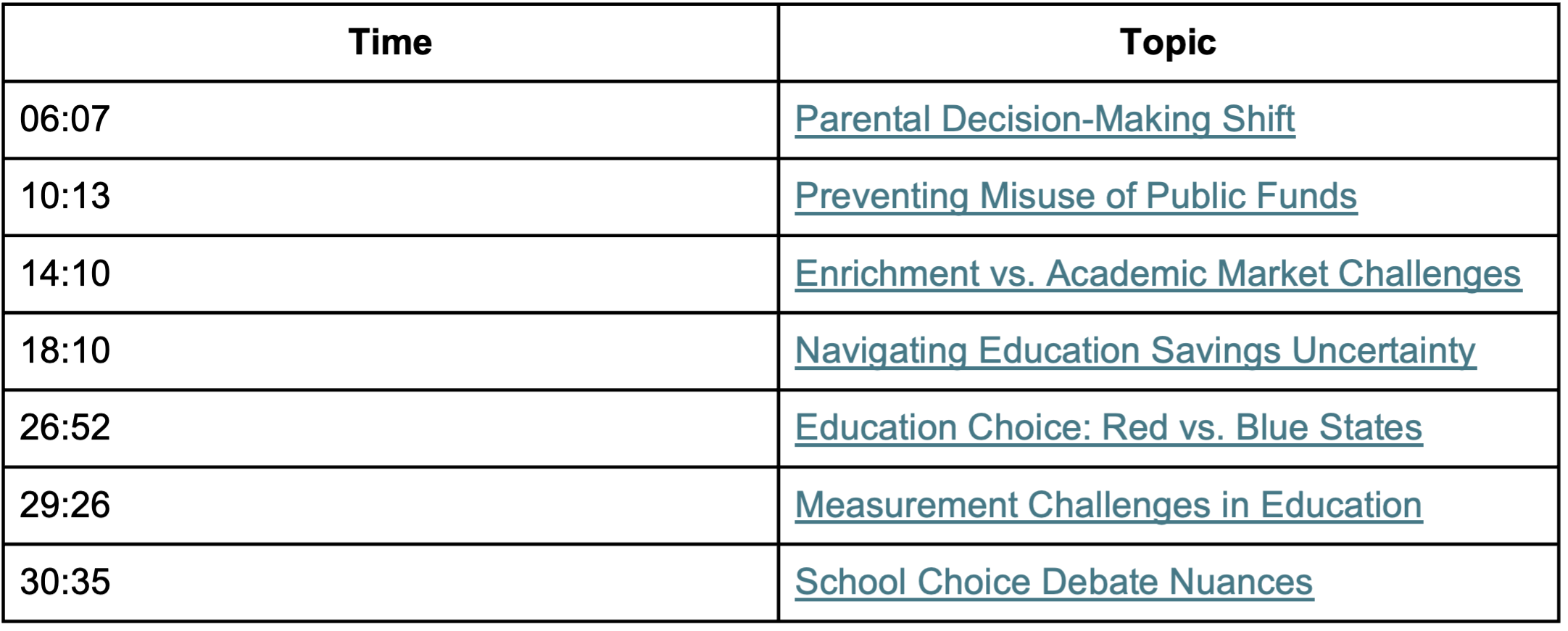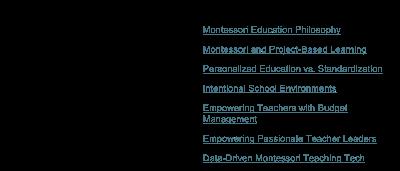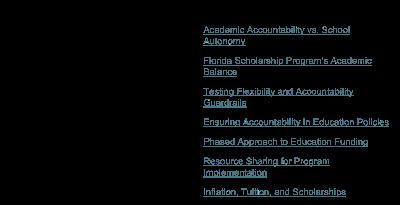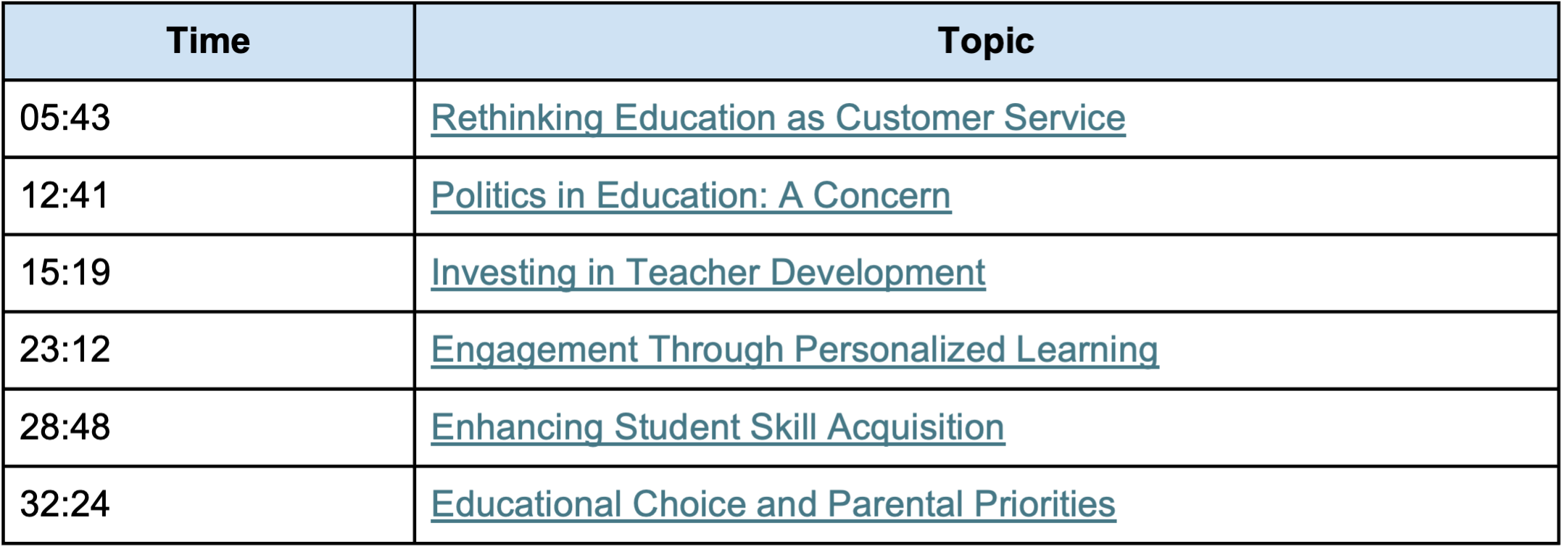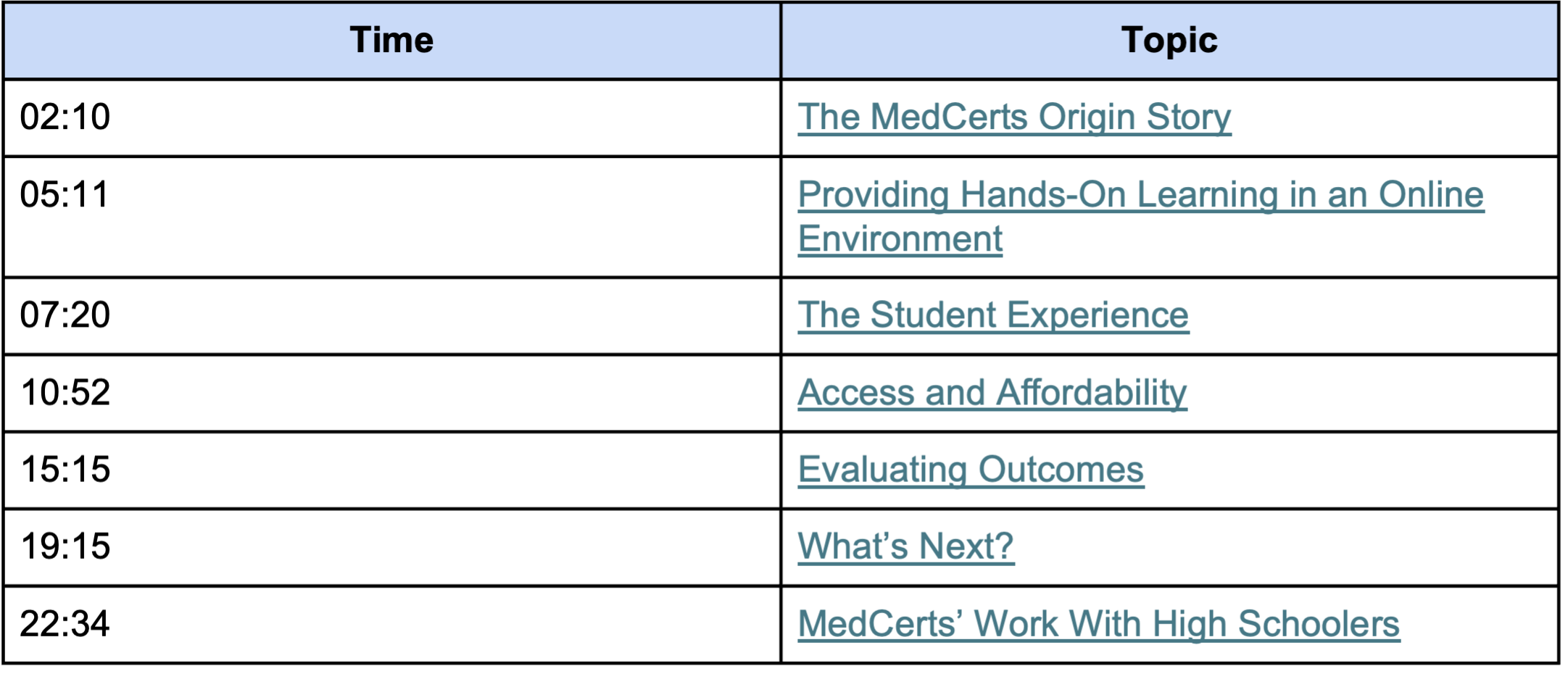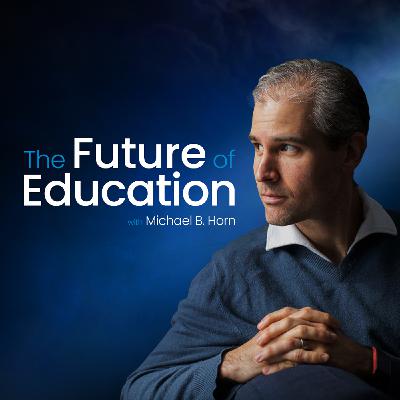The Move from School Choice to Education Choice in Florida
Description
Ron Matus, the Director of Research and Special Projects at Step Up For Students, joined me to discuss the evolution of education choice in Florida. We talked specifically about the significant growth and impact of education savings accounts (ESAs) on the landscape. And Ron shared insights into the trend of unbundled, à la carte learning by highlighting its rapid adoption and the factors driving it. We also touched on the accountability debate surrounding ESAs and the innovative roles districts and programs like Florida Virtual School are playing.
Michael Horn:
Welcome to the Future of Education. I’m Michael Horn. Delighted you are all joining us at the show where we are dedicated to building a world in which all individuals can build their passions, fulfill their potential, and live a life of purpose. And to help us think through how we get there, I am delighted that Ron Matus, the Director of Research and Special Projects at Step up for Students, which was founded as a nonprofit org to administer scholarships for Florida school children to the school that most made sense for them. I'm delighted that Ron is joining us today. Ron, first, good to see you. You've been a longtime friend and follower on both sides of the equation in this space. So how are you?
Ron Matus:
Good to see you. I'm great. I am amazed and grateful and honored to be on your show. I feel like I'm in a dream. So thank you so much for inviting me on.
Michael Horn:
As always, you guys will learn as you listen that Ron is nothing but flattering and over with the praise of others. But why don't you start before we get into some of the reasons that I wanted to talk to you, which is getting a view of the landscape in Florida, specifically. But first, give us sort of an overview briefly of your own background, how you came to the world of education and, and perhaps how, you know, Step up for Students, how it intersects with that story and how Step up for Students has actually evolved over time into its current set of operations.
Ron Matus:
Sure, sure. Well, I guess the most boring part would be my story, but I am a longtime former newspaper reporter. That's what I did really my entire adult life until I joined Step up back in 2012. I was at the Tampa Bay Times, which is the biggest and most influential newspaper in Florida. And back when newspapers had a little more juice, I mean, they were pound for pound, one of the best newspapers in America. I was there for 10 years, and for eight years I was the state education reporter. And so there's a direct connection between what I learned as a reporter and what inspired me to move over to Step Up. You know, over that time, writing a lot about issues with public education, seeing how choice was making a difference, and I started covering education, during Governor Bush's second term, of course, he did a ton to accelerate choice in Florida. So I was there in the early days as choice was ramping up, and I came to see how absolutely vital it was to an education system that I thought made sense. And at some point back around 2012, I got a chance to move over to Step Up. One of my former colleagues, a really remarkable guy named John East, who was a longtime editorial page writer at the Times, had moved over to Step Up. And a few years down the road, he reached out and said, hey, if you want to actually make a difference, instead of writing about problems, you want to help solve them, you might want to consider Step up and best decision I ever made.
I'm not one of those reporters who left the profession because things were crumbling around me, and I had to go, you know, reinvent myself as a PR flack or something. I left because I realized that choice was going to be the new normal, and I had a chance to shape that a little bit, and I had a chance to watch it unfold from just an incredible perch, which is Step Up. So the second thing that you were asking about how Step Up has changed, I think Step Up has changed remarkably over the time that I've been here. And in some ways, that change is representative of the change as a whole in the public education system in Florida. So when I got to Step Up, there were, like, 20 or 25 employees. We have 20 times that now. We have more than.
Michael Horn:
For real.
Ron Matus:
For real. We have more than 400 employees now.
Michael Horn:
Wow.
Ron Matus:
When I got to Step Up, we were serving about 50,000 students on scholarship. Today you probably heard this big announcement from Governor DeSantis last week. We've now reached the 500,000 threshold in terms of scholarship students. So the number of students we're serving has increased tenfold. And then, as you know, because you pay such close attention to this stuff, we're not just serving students on school choice scholarships anymore, which was the way it was when I got here, which is relatively simple. And I want, you know, my colleagues do a lot of incredible work. So I don't want to say it was simple, but
Michael Horn:
Emphasis on relatively. Yeah
Ron Matus:
Yeah, compared to what it is now. You know, these scholarships are technically now all ESAs. And so the volume of transactions that we have to process, it's gone through the roof. And so we have been right there the whole time, as Florida has moved from a system of district schools to school choice, and now from a system of school choice to education choice. And, and that's where we are now. And that next phase of going from school choice to education choice is exciting and we're right in the middle of it.
Expanding Education Choice Discourse
Michael Horn:
Yeah, I think that phrase from school choice to education choice is a really good way to frame it, of course, because ESAs are not just, and one of my biggest pet peeves is when people call them vouchers, and I'm like, it's not just, it's, it's very different in a lot of, in a lot of respects. And I love how you introduced yourself the same way you introduced yourself to me over, you know, probably, I think it was right before you maybe you formally joined Step Up for Students is the first time we connected and you said, I'm just a journalist trying to figure this out. So here you are, having learned quite a bit and for, and figured out quite a bit. And I guess the intersection section where I want to go in is about a year ago, maybe a little over, I wrote a piece suggesting that as education choice grows, meaning not just school choice, but we should start to expect more unbundling of what we think of as schools. Right. Students aren't just going to go to one school.
They'll have tutors, they'll have a variety of options. But I didn't expect to see a great unbundling en masse. And, and I base that frankly on two things. One, our theories at the Christensen Institute around how innovations tend to start as very bundled over time before they modularize and unbundled. But I also based it, frankly, on data from Florida that you all had published about how individuals were in fact using ESAs. But then fast forward, and you all came out with this report, a taste of à la carte learning. And it seems that things on the ground are changing quite a bit. So in that report, what did you learn? What is the data showing in terms of how people are using education savings accounts and how perhaps the nature of choice and schooling and learning is evolving?
Ron Matus:
I think it's changing pretty rapidly. So when you say, you know, you expected there to be an unbundling, but not a great unbundling, I guess it depends on, you know, what your definition of great is.
Michael Horn:
Sure, I got some latitude in the headline writing. Right.
Ron Matus:
So, I mean, I think there's a lot going on and things have changed very quickly. Your analysis was absolutely correct in that the vast majority of money at this point is still being used for private school tuition, even though technically these are ESAs. The vast majority of families are still using the ESAs like the old school. And I say old school even though most of the country hasn't even gotten these yet.
Michael Horn:
But I was going to say you're well ahead of the curve there.
Ron Matus:
We are ahead of the curve. And so, but, but most families are using it like a voucher in that they're using it to access the private schools that they want. And for what it's worth, those private schools are also changing pretty dramatically. I mean, I think there are a lot of dynamic things going on in the private school choice space too, and I don't want to diminish that. At the same time though, even though most of the money is still being used for private school tuition, we do have growing numbers of families who are doing completely customized, personalized, à la carte unbundled learning. And it's not, it's happening pretty quickly, but it's happening maybe a little less quickly than people realize because the first ESA is 10 years old. I mean, we got our first ESA program 10 years ago that was for students with special needs. But very quickly, thousands of parents were using that ESA to pick and choose from multiple providers and programs.
Rise of Personalized Education Programs
Ron Matus:
They were the pioneers, the early adopters, you know, whatever you want to call it. And they really started showing the rest of us what was possible. So, there were pioneers and there have been for 10 years. And then you fast forward to 2023 when we got this new scholarship program called the Personalized Education Program Scholarship, which is an ESA for a broader group of families who are not enrolled in public school. They're essentially homeschool families, although there are some legal distinctions there. But Michael, we went from thousands of families doing à la cart


